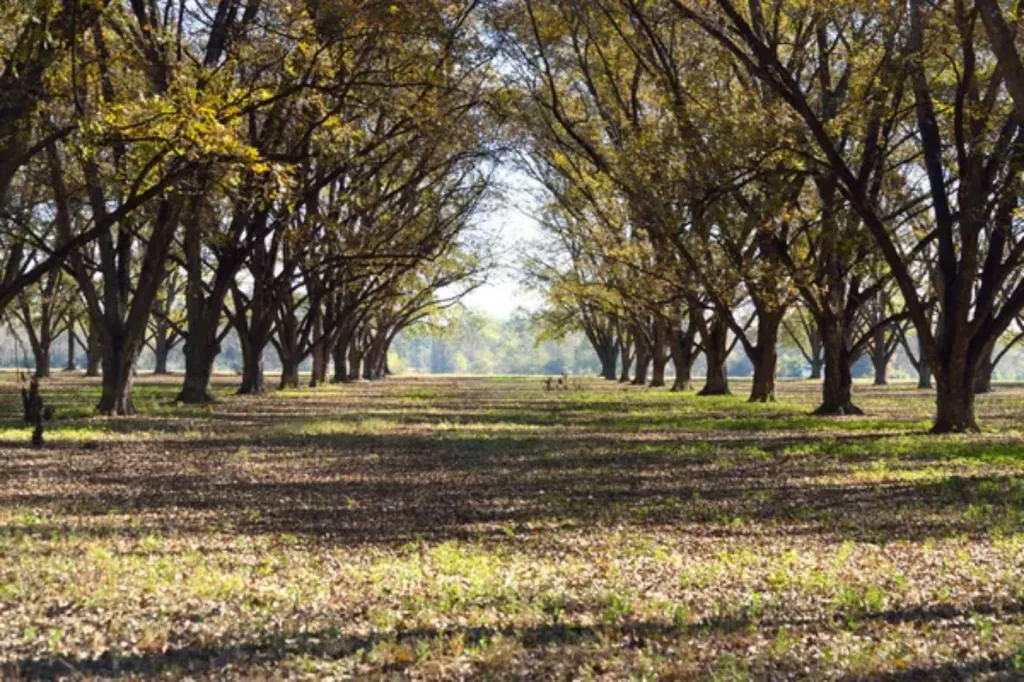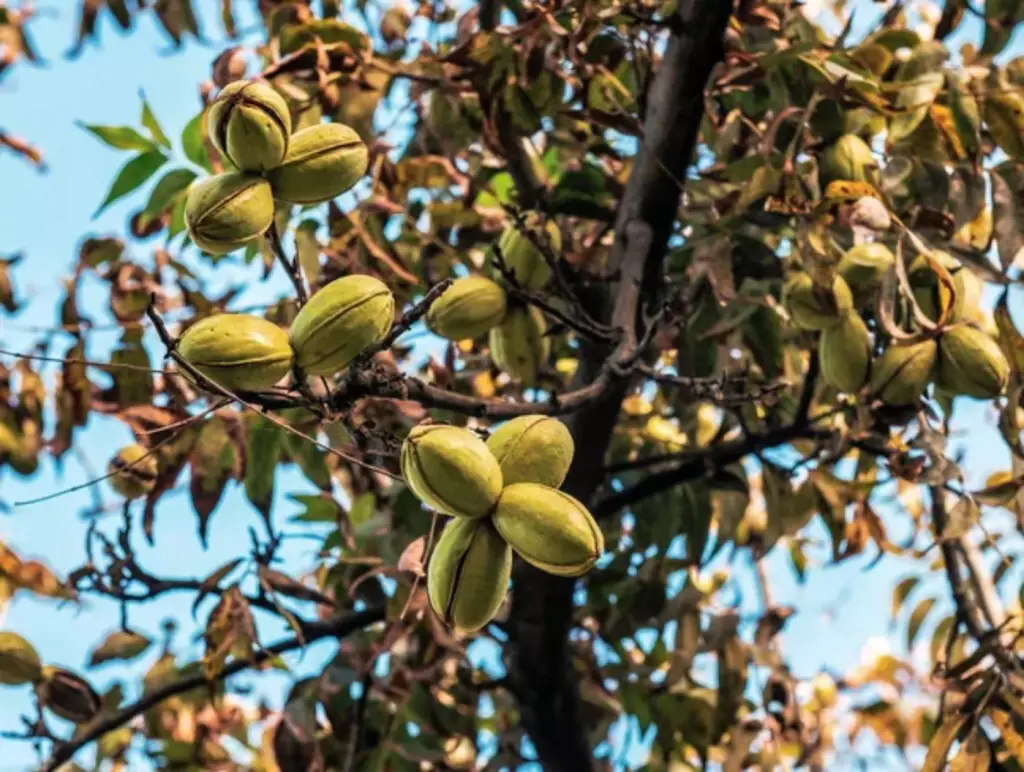How Many Years Does it Take for Pecan Trees to Produce?
If you’re considering adding pecan trees to the list of nut-bearing trees you’d like to grow, one thing you must learn is how long it takes for them to start producing nuts. Their nut production may take a long time, depending on several factors. In this article, we'll reveal how long pecan trees take to produce their first delicious nuts.
Generally, pecan trees take anywhere from 2 to 10 years to start producing nuts. However, grafted pecan trees typically bear fruit within 4 to 8 years, whereas seedling trees may take over 10 years. Factors like climate, sunlight, and soil quality play a major role in how quickly these trees mature.
Pecan trees can take several years to reach maturity, but the wait is well worth it. Pecans are a highly valuable crop, with a growing demand for their delicious taste and health benefits. Let’s get into a more detailed explanation of the factors that affect their growth and production.
Summary
- Pecan trees take 2–10 years before they can bear fruits that contain the nuts.
- Grafted trees are a better option if you want fast-producing pecan trees, as they can bear fruits within 4–8 years after planting.
- Pecan production is affected by the age of the tree, the variety of pecan trees being grown, climate and environmental factors, and pollination.

On this page:
Pecan Trees Produce Nuts from 2–10 years
Pecan trees can take anywhere from 2–10 years to start producing nuts from the time they are planted. Once mature, they can reach heights of 70–100 feet, with a spread of 30–50 feet across.
They grow vigorously during the first 5–10 years of their lifecycle and slow down their vegetative growth when nut production begins. Adult trees that receive proper care have the potential for a long production life of hundreds of years.

Generally, it is recommended to plant grafted pecan trees, as they typically bear fruit within 4 to 8 years, whereas seedlings may take over 10 years. Grafted pecan trees have many advantages, such as the following:
1. They improve production yield
The grafting process allows for the combination of desirable traits from two different trees, resulting in a stronger and more productive tree.
2. They are more disease-resistant
Pecan trees are susceptible to several diseases, such as pecan scab, which can greatly reduce nut production. But since grafted trees are often selected for their disease-resistant traits, if you plant them instead of the seedlings, you could help mitigate the risk of disease spreading to other pecan trees.
3. They are more consistent in their nut production
The grafting process ensures that the tree will have a consistent genetic makeup, which can lead to more predictable yields.
4. They can be easily selected to produce high-quality nuts
Grafting allows for the selection of specific pecan varieties that are known to produce high-quality nuts. This can help to ensure that the trees produce nuts that are desirable to consumers.
5. They can be more adaptable to different soil and environmental conditions
Grafted pecan trees can be grafted onto a variety of rootstocks, which can help improve the tree's adaptability to different soil types and environmental conditions. This adaptability can help your trees thrive in a variety of growing conditions.
Overall, planting pecan nuts can result in genetic variation among seedlings and slow the tree's growth. But to ensure optimal growth, it's best if you could opt for grafted trees.
Nevertheless, the overall production of pecan nuts is still affected by factors like the age of the tree, the variety of pecan trees being grown, pollination, and various climate and environmental elements, which we’ll discuss further below.
Factors Affecting Pecan Tree Production

The age of the tree plays an important role in pecan tree production
In general, most pecan trees start producing nuts after about 4 - 6 years of growth. However, it can take anywhere from 2 to 10 years for pecan trees to start producing nuts, depending on several factors.
The good thing about pecans is that they can produce fruits for up to 100 years, giving you a steady supply of their delicious fruit for many generations.
The production timeline of pecan trees depends on the specific variety
Some pecan trees start producing nuts earlier in their growth cycle, while others may take longer, as each variety has its own unique characteristics. When choosing a pecan tree, you may want to first research the different varieties and their suitability for your hardiness zone to ensure optimal growth and production.
Recently, a pecan variety called “Pawnee pecan” has gained popularity because it tends to produce nuts more rapidly than other varieties.
Climate and environmental conditions greatly influence pecan tree production
Pecan trees require an ideal climate, sunlight, space, and soil quality to thrive. Generally, they are best suited for hardiness zones 5-9, as they require a specific number of chilling hours to produce fruit.
If you could make sure that your tree receives adequate sunlight and is planted in well-draining soil, then you could expect healthy tree growth and good nut production.
Proper pollination optimizes pecan tree production
Pecan trees are not self-fertile, which means that they require cross-pollination from another pecan tree to produce nuts.
Without proper pollination, the pecan tree will not produce a good crop of nuts or may not produce any nuts at all. Pecan trees are wind-pollinated and have separate male and female flowers on the same tree.
Cross-pollinating different varieties of pecan trees can help improve the quality and quantity of the nuts produced. To improve pollination within your pecan orchard, you may want to do the following:
- Ensure that there are enough pollinators, such as bees, in the orchard during the flowering period to aid in pollination and produce a good crop of pecans. You may check bee tree beekeeping in this article.
- Consider planting multiple compatible varieties in close proximity.
- Plant grafted pecan trees, as they often have better pollination compatibility and provide more reliable production than seedlings.
Other Helpful Information for Pecan Growers
Pecan trees exhibit an alternate bearing cycle
One of the patterns you'll observe in pecan trees is the alternate bearing phenomenon, which means that they may produce a heavy crop one year, followed by a lighter crop the next. This process is influenced by a variety of factors, such as water adequacy, nutrient availability, and climate.
To reduce the effects of alternate bearing, perhaps you can apply consistent tree care practices, such as proper pruning and providing the annual nutritional requirements for your trees.

Choose the right pecan variety for your needs
Pecan varieties differ in terms of their resistance to common diseases, susceptibility to zinc deficiency, and ability to produce nuts in your climate.
You can try consulting your local county cooperative extension for advice on which pecan variety is best suited to your area. Pecan trees tend to thrive in sandy or loamy soil, so you might want to make sure your soil type is compatible with your chosen variety.
Avoid transplant shock
Transplanting pecan trees has been a common practice to provide shade and allow full nut production sooner than new nursery trees planted at the same time. However, during the transplant process, a large portion of the root system is lost which result in transplant shock.
To avoid this, you need to keep the root system moist during the entire planting process and provide adequate water after planting. Additionally, you may want to make sure that you are not neglecting the fertilizing process. Most commercial growers prune their trees prior to transplanting.
Calculate the cost-effectiveness of growing pecan trees
Growing pecan trees can be a cost-effective venture for homeowners, but you may need to consider the time and resources it takes for the trees to start bearing nuts. On average, pecan trees take 2–10 years before they produce their first crop, with alternating years of heavy and light nut production.
You should account for the time commitment and expenses, such as fertilizing and pruning, when calculating the overall cost-effectiveness of growing pecan trees on your property.


